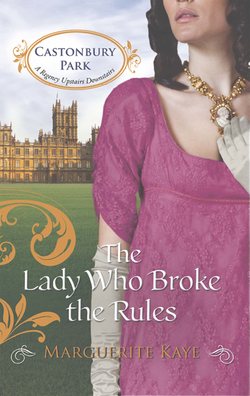Читать книгу The Lady Who Broke the Rules - Marguerite Kaye - Страница 6
AUTHOR NOTE
ОглавлениеThe history of slavery has fascinated me. It’s a complex, emotive and often controversial subject and no one except those who experienced it can know what it was really like. In writing this book I did a lot of research, but ultimately what I’ve written is a personal take which may or may not resemble ‘reality’. What I want to share with you are some of my reasons for choosing to take on the challenge of making a freed slave a romantic hero in the first place.
The Lady Who Broke the Rules is set in 1816. In the United States the trade of slaves was abolished in the north in 1804, after which the manumission of slaves in those states gathered momentum. In the South, however, where cotton was in increasing demand (paradoxically thanks to the north’s industrialisation of textile manufacture), slaves were a hugely important part of the economy and resistance to abolition was significant.
Virgil, my hero, was born into slavery in the South and freed in the north. He was one of the fortunate ones who came to true eminence and used his wealth to give others the chances he had had to make for himself. Though in reality this kind of success was rare, it was not unheard of. Robert Purvis is just one example of the black philanthropists from whom I took inspiration for Virgil, but his entrepreneurial side is an amalgamation of a whole number of black men and women who flourished in nineteenth-century Boston, renting out real estate, setting up restaurants and beauty parlours, making shoes and clothes for the mass market, taking on the establishment by training as lawyers and doctors.
Across the pond in Great Britain many aristocratic families had derived a large part of their wealth from plantations in the West Indies which relied on slavery, but their influence was on the decline. The actual trade of slaves became illegal in 1807 and, although it was not until 1833 that slavery itself was abolished, by 1816 the growing Abolitionist movement, coupled with the decline of the economic significance of the West Indies plantations, made the idea, if not the reality, of slavery much less politically and socially acceptable than it had been a decade or so before.
From the point of view of this story, what interested me most about the British abolitionists was how many of them were women. It was one of the few political causes in which it became acceptable for women to participate and in which women took a leading and influential role, so I relished the opportunity to create a heroine who could, without it seeming a historical anachronism, be active politically and philanthropically. Josiah Wedgwood’s daughter, Sarah, who introduces Kate to Virgil, was just one real-life example I drew on.
There’s a huge difference between perception and reality. Kate had only read about slavery. Virgil had experienced it. As a writer, I had to try and imagine myself in both sets of shoes and whether I’ve managed it or not—well, that’s for you to decide. But ultimately this isn’t a book about slavery—it’s about love. And I hope you’ll agree that Kate, The Lady Who Broke the Rules, is as perfect for Virgil as I imagined her to be.
